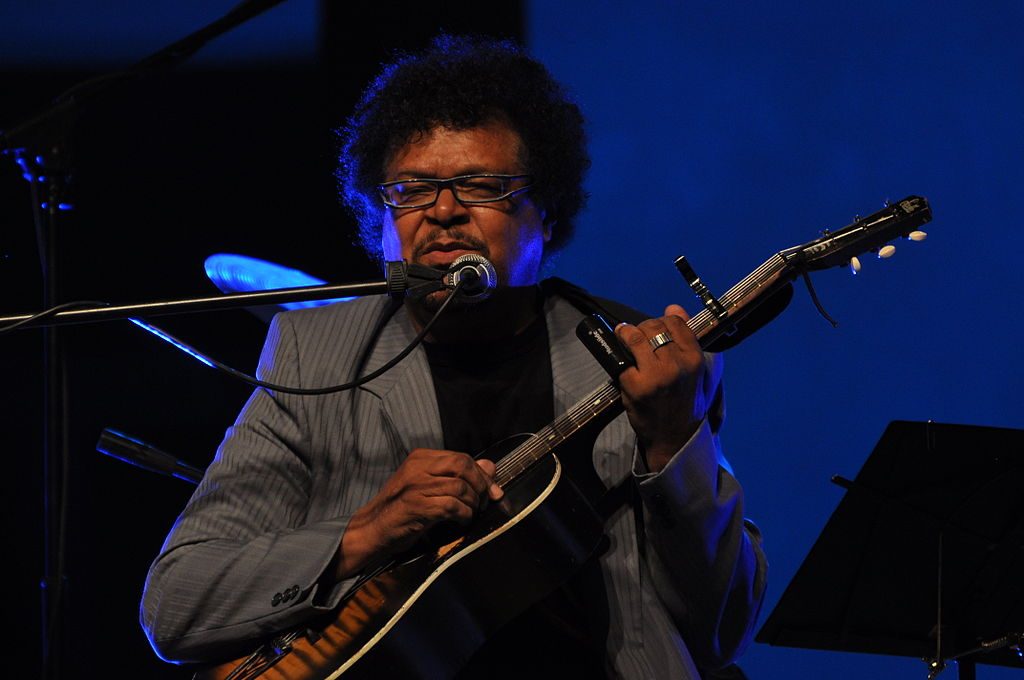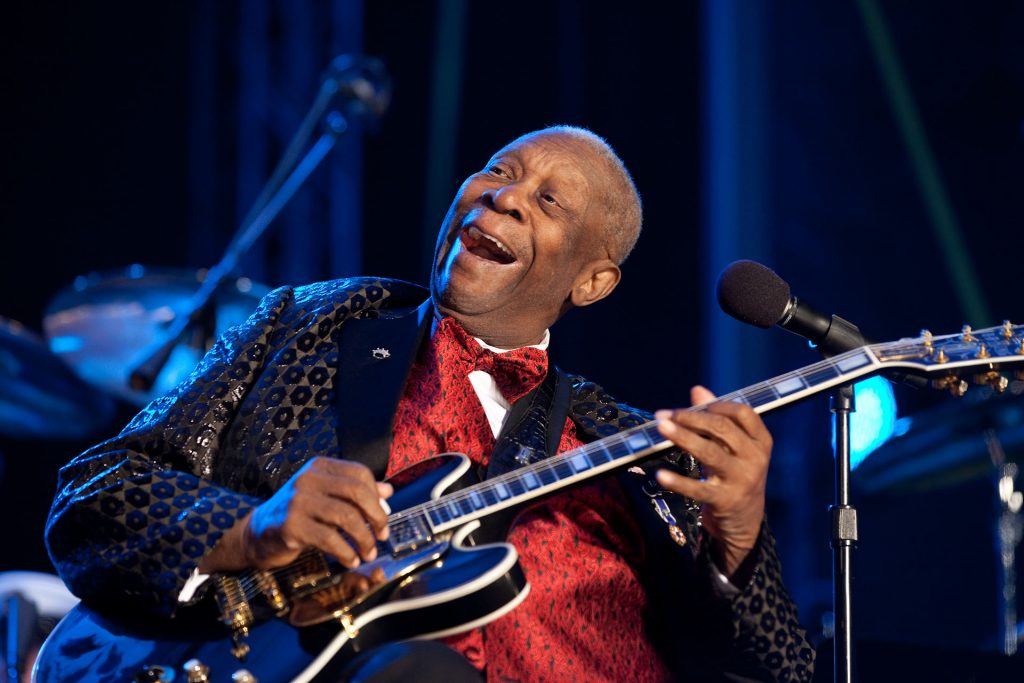Blues is the music of tears, if you will. So, while there is no genre that can be played without heart, blues is unequivocally the one that is most tightly connected to feelings of loss. Other common feelings expressed through blues were injustice, torment, love, sin, atonement, freedom, and all the other heavy stuff out there. It is deep, highly emotional, moving, and once you fall for it, you will get hooked. The music itself is wildly complex for something first considered to be “devil’s music” and a means for slaves to communicate their plans of escape from persecution. It was born from a profound feeling of misplacement and was a way of coping to the harsh life African Americans could only escape from in song and within their own hearts.
SO, WHY DO WE CALL IT THE BLUES?

Harrison Kennedy in concert at a Blues Festival
Any uneducated modern-day explanation of why they called it the blues would say because it is a very sad form of music, created to express mainly feelings of loss and intense emotional distress. It is mainly sung by African-Americans and it is meant to express many of the sorrows people felt about not fitting in the society of the White man. So, for many people, the blues are strongly connected to feeling blue.
This explanation would come at a time when blues music is very well integrated in the worldwide music portfolio, it is considered a highly complex and profound genre, and it is now even played by white musicians as well (Norah Jones and Eric Clapton spring to mind when trying to make a point that will be understood by many). Not to mention that people listening to blues are seen as intelligent enough to grasp a non-commercial message and to appreciate a multi-layered type of music.
In reality, “the blues” was an expression derived from a state that was seen as a form of utter agitation and despair that came from alcohol withdrawal. This intense feeling was associated to the strong way in which slaves and Black people expressed their emotions through song. In time, the association faded and the expression of trials of black life became that of melancholy, as white folks call it. However, there was a huge difference between the melancholy of white people and the challenges of the abused, misplaced, beaten, overworked Black people who had been brought on plantations.
The Evolution of the Blues
The first plantation songs were sung acapella and most of the words were coded so that the masters and other white people did not understand what they were singing about. Then, as they were allowed to gather in Church, they took their unique way of expression to praise God at the end of sermons. Religious songs were composed of syncopation backed by polyphony, call and response – one of the most recognizable elements of blues music -, and even belting.
Afraid that the African drums were a way of communicating hidden messages, the masters banned them. However, among the only instruments Black people were allowed to play were the banjo and other rudimental, rural ones. After the Emancipation, they switched to guitars and the harmonica, and really started to perfect the style we now know and love. This was the birth of country blues.
Blues Singers and Blues Music

Blues singer
Blues is all about feeling and real feeling cannot be faked. Therefore, there is a difference between the blues sang by genre veterans, and the studied blues music played by those who have been adopted by the trend. This being said, you can well listen to blues music, be it in the forms of the recordings of blues veterans, like Robert Johnson, or award-winning guitarist, singer, and songwriter Eric Clapton.
How can this be? Easy! Just like any other complex music genre, blues has variations of styles. Shortly after it was introduced to white audiences, blues started to become wildly popular and white musicians started to sing the blues. Even so, it’s Black musicians who sing it best due to their emotional
involvement and impact on their culture. The type of blues sang by Eric Clapton is blues rock, a form of the genre that focuses more on the instrumental part and less on the emotional experience. Not that Clapton’s music lacks emotion, but because the life challenges sang about are different.
The Form of Blues Music

Birds of Chicago Blues Band
The tonal African language gave early blues songs the rhythm they needed. It progressed into the AB pattern consisting in the singing over the first fours bars, their repetition over the next four bars, and a conclusion over the final four bars.
There is a 12-bar framework to any blues composition, with a typical set of three different chords played over the mentioned 12-bar scheme. Blues music has specialized blues notes, distinguished by the third, fifth, and seventh notes. And if the word “groove” sounds familiar, know that it is a blues concept. Namely, the repetitive effect reinforced by the call-and-response and rhythm.
Understanding Blues as a Cultural Revolution

BB King performs on stage
Blues music started out as plantation work songs, when the masters and supervisors banned the use of drums which they considered to be an instrument of communication. Working all day long in the cotton fields was hard and strenuous labor, and the blues music slaves sang gave them the rhythm and the courage to continue. And even though it was born from such a specific context, the blues is a feeling everyone can relate to. It is more than what you can express in mere words, and since music is a universal language, this explains how so many people came to love the blues.
What must be appreciated about blues is that along the lines of its creation you can also note the creation of the African Americans from Africans. This is a group of people who were torn from their home place, who were forced to let go of their language, traditions, and religion. Blues emerged as they survived and evolved.










